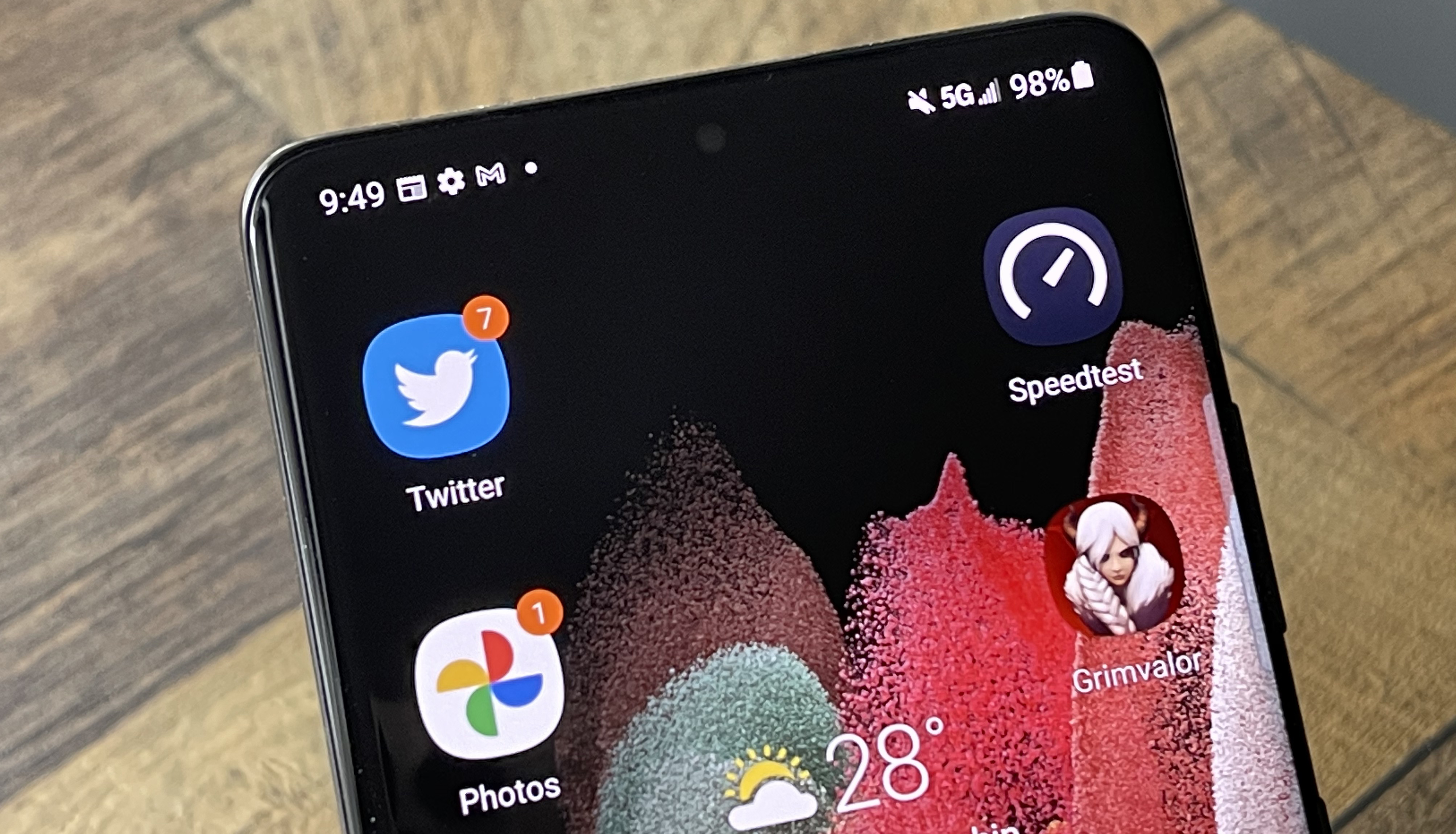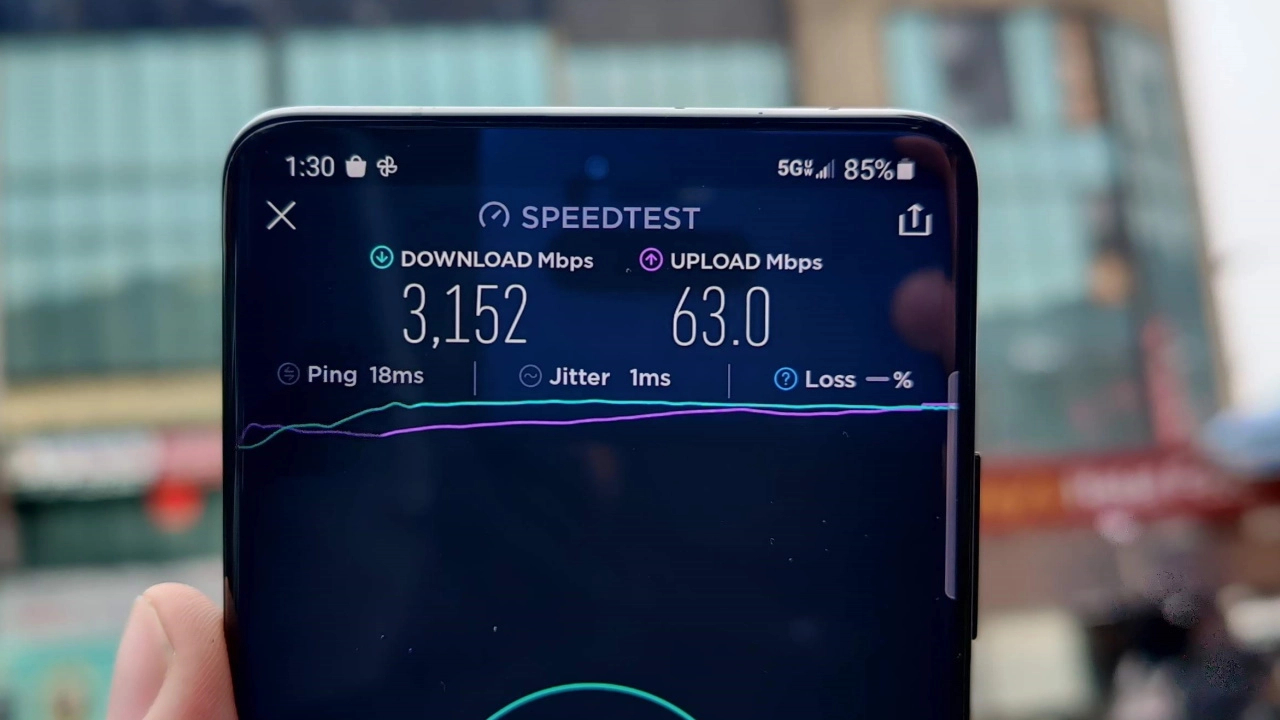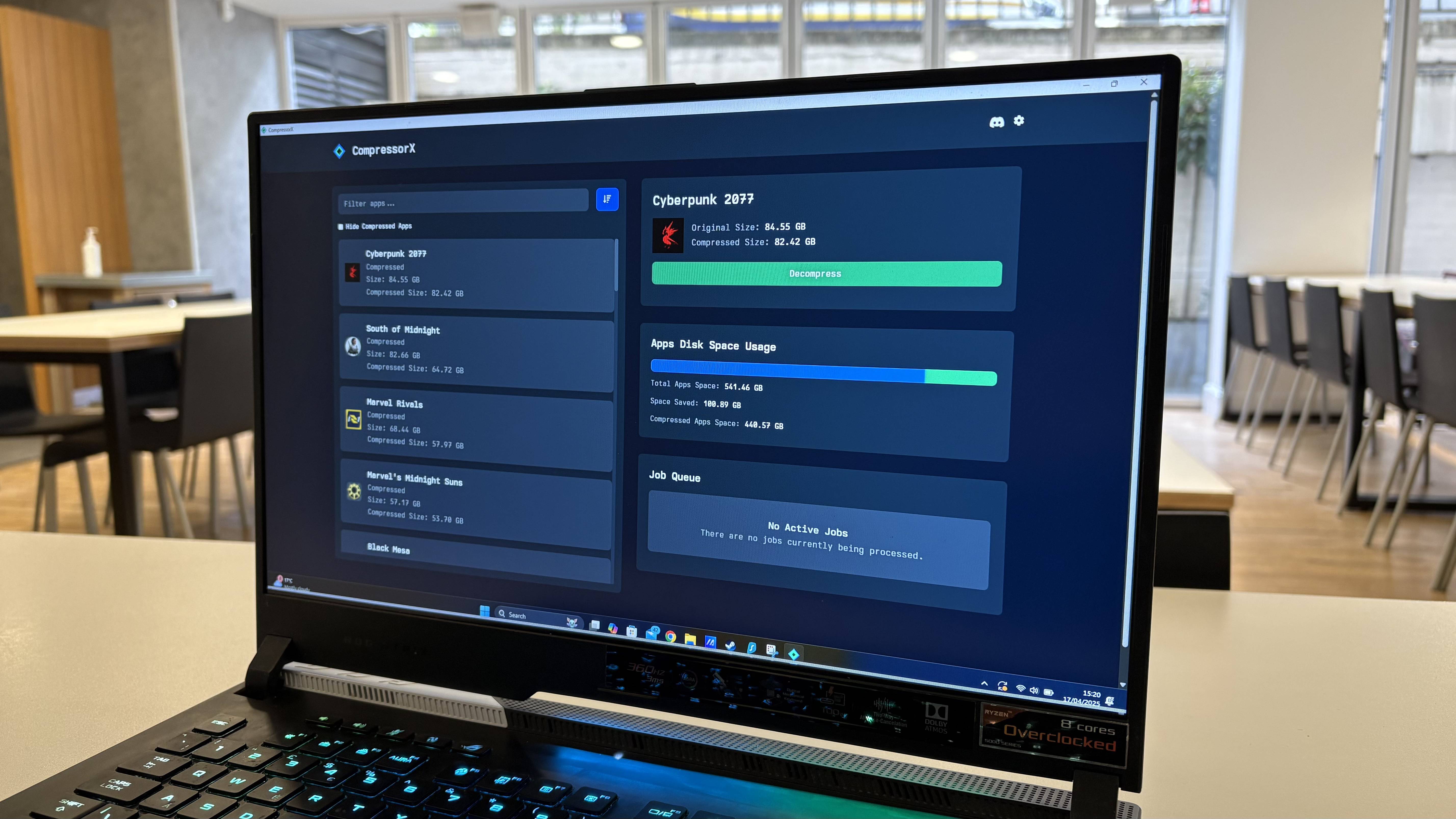Samsung Galaxy S21 Ultra just broke a major 5G speed barrier
The Galaxy S21 Ultra blazes past 3 Gbps on Verizon 5G

In our Samsung Galaxy S21 Ultra review, we found that Samsung's latest flagship outpaces the iPhone 12 Pro Max when it comes to 5G speeds. But the S21 Ultra has the potential to deliver some of the fastest 5G speeds we've heard about — at least under ideal circumstances.
Take PCMag's Sascha Segan, who saw over 3 Gbps on his Samsung Galaxy S21 Ultra using Verizon's millimeter-wave (mmWave) 5G. Granted, he was standing right by one of Verizon's 5G panels, so conditions were as close to optimal as they can get in the real world, but his results are nonetheless mind-boggling.
- 5G vs. 4G: What's the difference?
- Verizon 5G: Coverage map, phones, and more
- Plus: Galaxy S21 Ultra vs. iPhone 12 Pro Max
The Galaxy S21 Ultra uses Qualcomm's latest X60 5G modem, which means it's the perfect phone to test out what mmWave can do. Segan achieved these results in New York City, one of the 61 cities where Verizon has installed mmWave towers.
We're still in the early days of the 5G revolution, and much like it was back in the 4G days, there's still a lot of room for growth. The potential, however, is great, especially when we see results like the ones posted for the S21 Ultra.
It makes sense why Verizon is pushing mmWave so hard because it truly can change the mobile internet game. Its weakness, though, is that it has a very short-range. Again, Segan only saw this 3 Gbps-plus result standing right across the street from one of Verizon's panels. Go a block away and the speed halves. So while the possibilities are extremely exciting, it's worth noting the downsides.

Buildings, windows and other physical obstructions seem to affect mmWave. Going inside could see you lose half of that insane 3 Gbps. These are known weaknesses with mmWave, which while impressive, shows it has a long way to go before being completely viable for everyone. And it'll definitely take some time for the rest of the US to see its full effects, though Verizon hopes to add 20 more cities to its mmWave-based Ultra Wideband ranks throughout the year.
mmWave is only part of the 5G picture for Verizon. The carrier also has a nationwide 5G network, built on lower-band spectrum that reaches an estimated 230 million people. Lower-band spectrum has a wider reach than mmWave, but its speeds are much slower. In some cases, in fact, Verizon customers have seen low-band 5G speeds that are slower than LTE.
Sign up to get the BEST of Tom's Guide direct to your inbox.
Get instant access to breaking news, the hottest reviews, great deals and helpful tips.
- What are the best 5G phones right now?

Jordan is the Phones Editor for Tom's Guide, covering all things phone-related. He's written about phones for over six years and plans to continue for a long while to come. He loves nothing more than relaxing in his home with a book, game, or his latest personal writing project. Jordan likes finding new things to dive into, from books and games to new mechanical keyboard switches and fun keycap sets. Outside of work, you can find him poring over open-source software and his studies.
-
Harry Devlin Verizon's goal for mmWave 5G is not for phones it's for home broadband, and IOT. mmWave 5G isn't very useful in a phone where it's unlikely that you'd see any difference between 100Mb/s and 3Gb/s.Reply
I bet that Qualcomm will be cranking out X60 modem chips for use in modem/routers.
